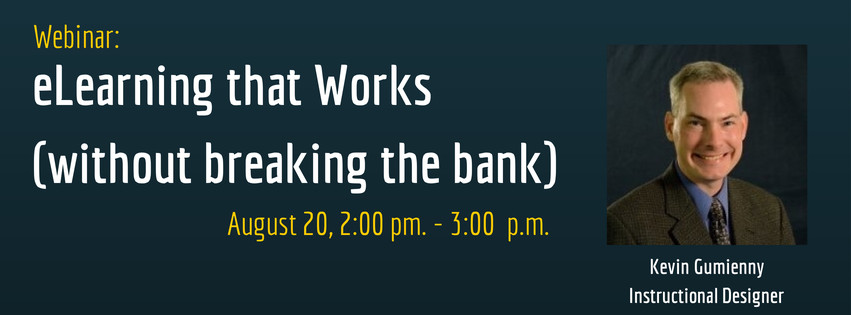It might seem like a good idea to cut development time by eliminating the storyboard. After all, once you have your content down, it would be quicker to just jump into your development tool and start programming the course.
Don’t.
A storyboard is a graphical representation of what the learner will see once they enter the learning environment. There are many different methods to create storyboards–I’ll link to some examples at the end of the article–but they generally have a mock-up of the screen, the narration script, and any special instructions for developers (such as how items should animate on the screen, or how an interaction should work). Once the designer outlines how the content should be displayed in the storyboard, the design can be implemented in authoring software.
There’s a real temptation to skip the storyboard step, especially if you’re both the instructional designer and the elearning developer. After all, if you can envision the course, why take the time to mock it up? Just move from content to development, and save time.
This may seem like a good idea, but it really isn’t. Here are three reasons that you want to take the time to storyboard a course.
First, storyboarding helps you envision the course as a whole. What if you’re halfway through the course and find out that your current visual scheme won’t let you display content the way you need to? Or, late in the course, you find out that your theme doesn’t suit the last topic that you wanted to cover? It’s a lot easier to redesign the course at a storyboard level than it would be to go back and rewrite the course in a software development tool.
Second, a storyboard helps you pass on the course to another designer, should the need arise. I’ve been in a situation where I took shortcuts on a storyboard–solid content, but little visual design–and then the project was placed on hold. When we resumed production, the project went to a different designer. Because the original vision was lacking, the new designer had to reinvent the design, taking more time to produce the course than it would have if I had laid out the full vision the first time.
Third, storyboarding helps you and the client (whether internal or external) come to agreement on course design. You can try out ideas, fine tune the narration, and play with visual designs until you and the client find an approach that you both like. It’s a lot easier and quicker to change direction in content and visual design in a PowerPoint or Word document than it is when you’re deep in development.
Creating a well-developed storyboard does take time. But it’s time paid back through the savings in development, as you ensure that the project will work conceptually, is portable to another designer, and is in alignment with the client’s expectations before development work is started.
Storyboard resources:
Connie Malamed’s Storyboard Depot: http://theelearningcoach.com/resources/storyboard-depot/
Christopher Pappas’s Ultimate Storyboard List: http://elearningindustry.com/free-storyboard-templates-for-elearning
Mayra Aixa Villar has a nice list that brings in options for the iPad: http://mayraixavillar.wordpress.com/2012/11/05/10-great-tools-for-storyboarding/
It’s a rather specialized tool, but BranchTrack can help you create branching scenarios: https://www.branchtrack.com/
